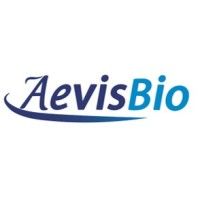Request Demo
Last update 08 May 2025
BET1
Last update 08 May 2025
Basic Info
Synonyms BET1, Bet1 golgi vesicular membrane trafficking protein, BET1 homolog + [2] |
Introduction Required for vesicular transport from the ER to the Golgi complex (PubMed:34779586). Functions as a SNARE involved in the docking process of ER-derived vesicles with the cis-Golgi membrane (By similarity). |
Related
2
Drugs associated with BET1Target |
Mechanism BET1 inhibitors |
Active Org. |
Originator Org. |
Active Indication |
Inactive Indication- |
Drug Highest PhasePreclinical |
First Approval Ctry. / Loc.- |
First Approval Date20 Jan 1800 |
100 Clinical Results associated with BET1
Login to view more data
100 Translational Medicine associated with BET1
Login to view more data
0 Patents (Medical) associated with BET1
Login to view more data
149
Literatures (Medical) associated with BET101 Jun 2024·Animal Genetics
The landscape of allelic expression and DNA methylation at the bovine SGCE/PEG10 locus
Article
Author: Chen, Weina ; Zhang, Yinjiao ; Wang, Kun ; Yu, Wenli ; Li, Shujing ; Jin, Lanjie ; Zhang, Cui ; Li, Shijie ; Huo, Haonan
01 Apr 2024·Journal of Cellular and Molecular Medicine
Proteomic studies in VWA1‐related neuromyopathy allowed new pathophysiological insights and the definition of blood biomarkers
Article
Author: Roos, Andreas ; Hentschel, Andreas ; Ruck, Tobias ; Sickmann, Albert ; Daya, Nassam ; Marina, Adela Della ; Vorgerd, Matthias ; Preusse, Corinna ; Güttsches, Anne‐Katrin ; Gangfuss, Andrea ; Deschauer, Marcus ; Schara‐Schmidt, Ulrike ; Athamneh, Mohammed
30 May 2023·eLife
The Uso1 globular head interacts with SNAREs to maintain viability even in the absence of the coiled-coil domain.
Article
Author: Monterroso, Begoña ; Tagua, Victor G ; Pinar, Mario ; Alonso, Ana ; Arst, Herbert N ; Bravo-Plaza, Ignacio ; Peñalva, Miguel A ; Galindo, Antonio
Analysis
Perform a panoramic analysis of this field.
login
or

AI Agents Built for Biopharma Breakthroughs
Accelerate discovery. Empower decisions. Transform outcomes.
Get started for free today!
Accelerate Strategic R&D decision making with Synapse, PatSnap’s AI-powered Connected Innovation Intelligence Platform Built for Life Sciences Professionals.
Start your data trial now!
Synapse data is also accessible to external entities via APIs or data packages. Empower better decisions with the latest in pharmaceutical intelligence.
Bio
Bio Sequences Search & Analysis
Sign up for free
Chemical
Chemical Structures Search & Analysis
Sign up for free

